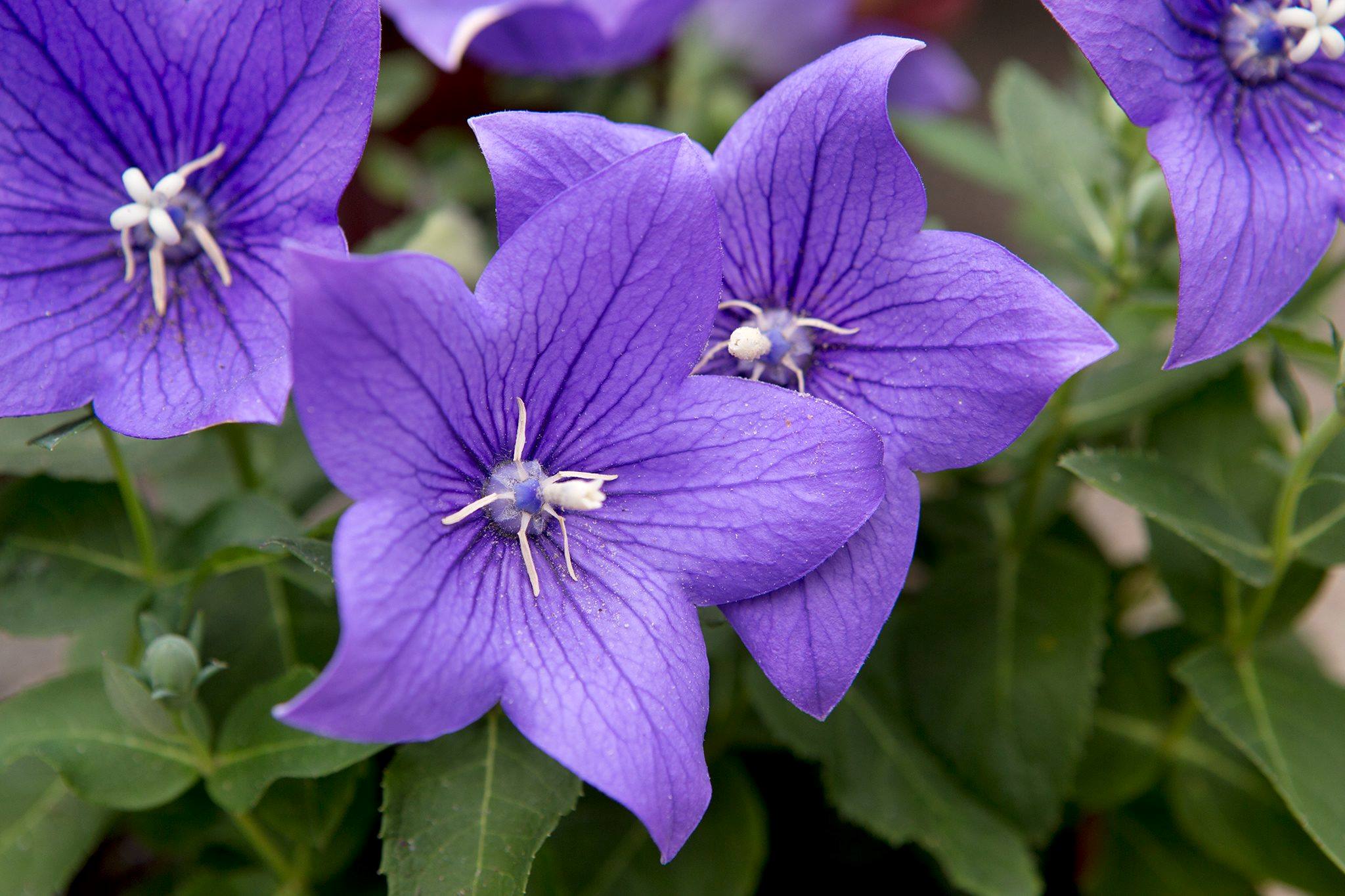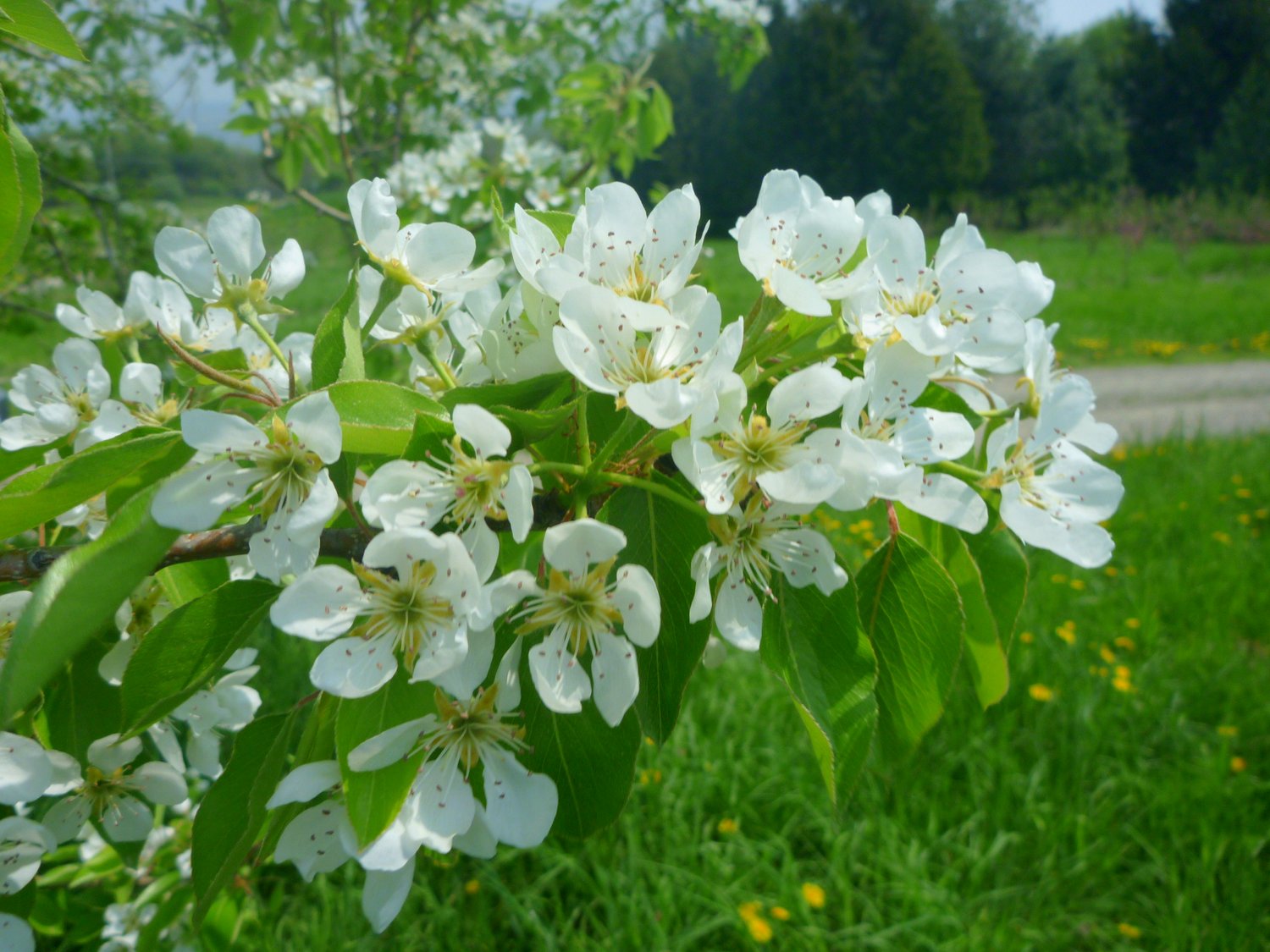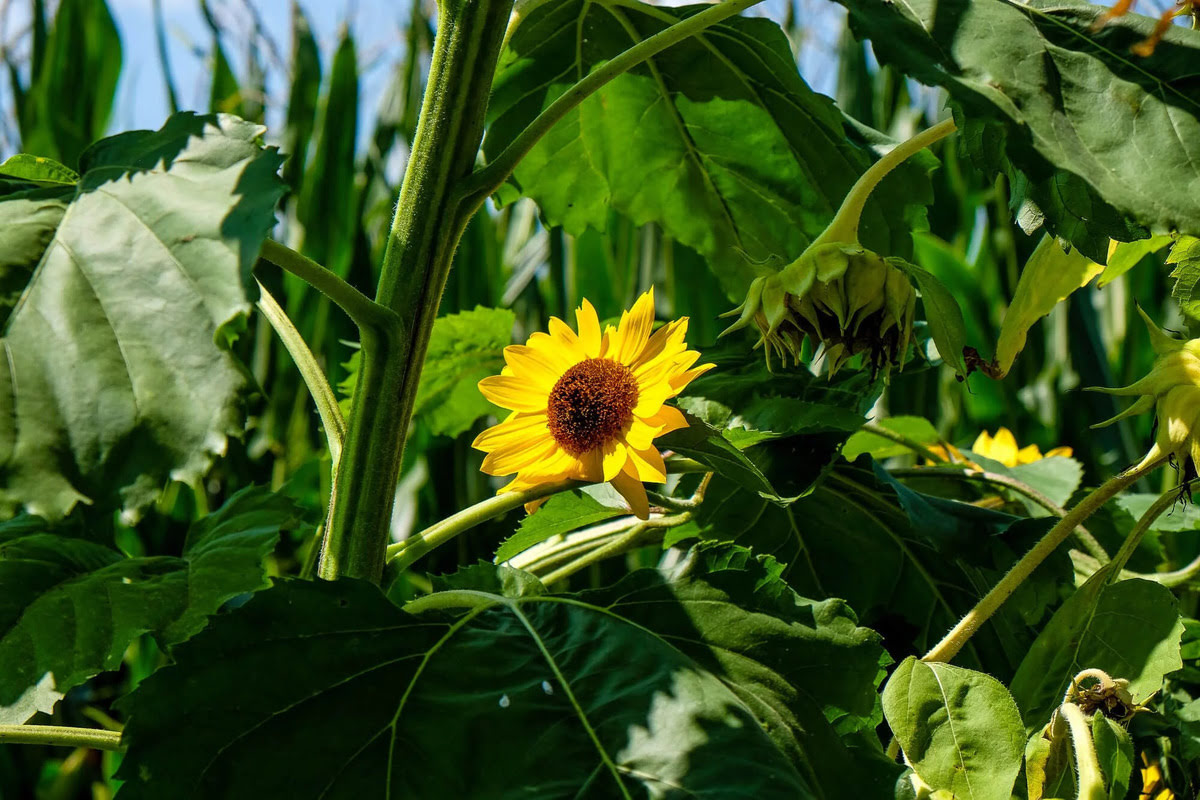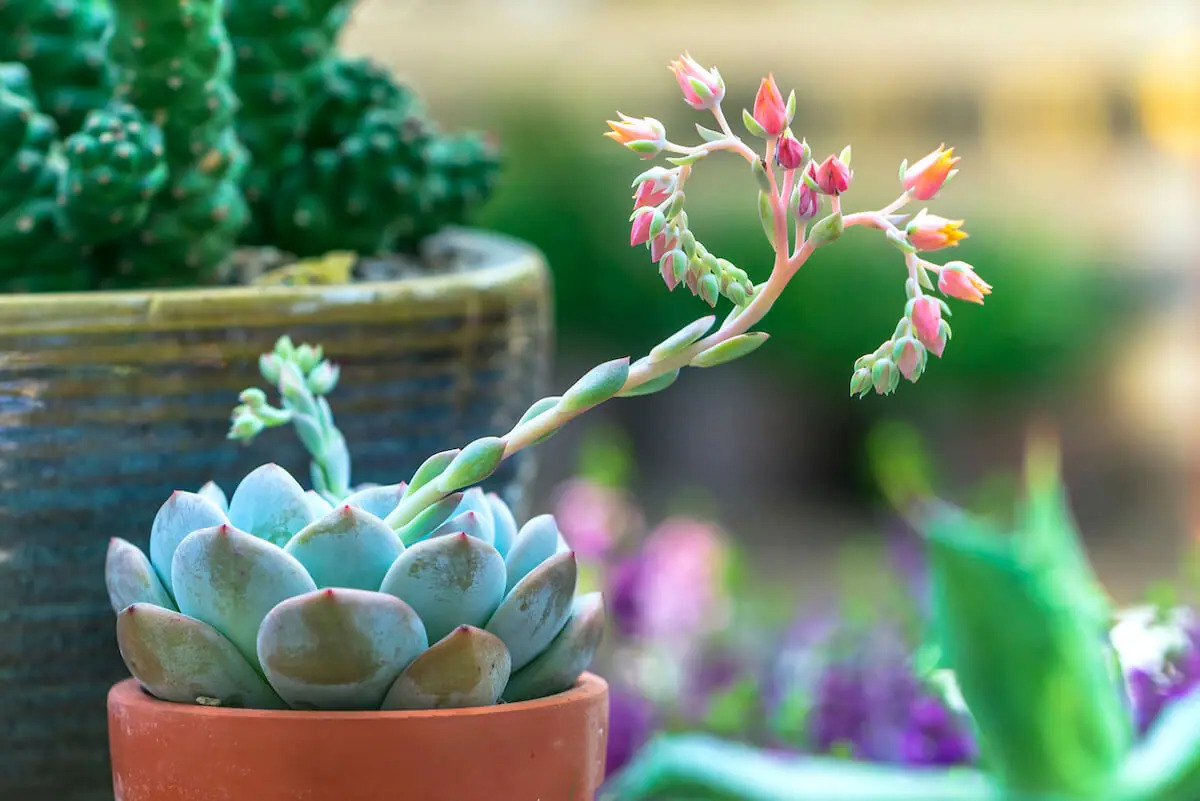Home>Types of Gardening>Ornamental Gardening>When Do Balloon Flowers Bloom


Ornamental Gardening
When Do Balloon Flowers Bloom
Modified: February 6, 2024
Discover when balloon flowers bloom and how to incorporate them into your ornamental gardening. Enhance your garden with these stunning blooms.
(Many of the links in this article redirect to a specific reviewed product. Your purchase of these products through affiliate links helps to generate commission for Chicagolandgardening.com, at no extra cost. Learn more)
Table of Contents
Introduction
Welcome to the world of ornamental gardening, where beauty blooms in every corner of the garden! One plant that captures the attention and admiration of garden enthusiasts is the balloon flower. With its unique balloon-like buds that burst open into stunning blossoms, this plant adds a touch of whimsy and charm to any landscape.
But when exactly do these delightful flowers bloom? Understanding the bloom time of balloon flowers is essential for planning a garden that is alive with color throughout the year. In this article, we will explore the factors that influence the bloom time of balloon flowers and discover the optimal conditions for encouraging a bountiful display of blooms.
Whether you are a seasoned gardener or a novice getting your hands dirty for the first time, this guide will provide you with valuable insights on when to expect the delightful blossoms of balloon flowers, and how to extend their bloom period for maximum enjoyment.
So, let’s dive into the fascinating world of balloon flowers and uncover the secrets of their bloom time!
Understanding Balloon Flowers
Balloon flowers, scientifically known as Platycodon grandiflorus, are herbaceous perennial plants native to East Asia. They are aptly named for their unique blossoms that resemble inflated balloons before opening up into stunning star-shaped flowers. These plants belong to the Campanulaceae family, which includes other well-known flowers such as bellflowers and lobelias.
The balloon flower’s distinctive buds are formed by sepals that fuse together, creating a balloon-like structure. As the buds mature, they slowly change color and eventually burst open into beautiful blossoms. The flowers come in a variety of shades, including blue, purple, pink, and white, adding a delightful burst of color to any garden.
Aside from their captivating appearance, balloon flowers are also known for their hardiness and ability to thrive in various climates. They can withstand both heat and cold, making them adaptable to different garden environments.
Balloon flowers are typically low-maintenance plants that require minimal care. They have a moderate growth rate and can reach a height of around 30 inches, making them suitable for borders, beds, and containers. These versatile flowers also attract pollinators such as bees and butterflies, contributing to a healthy ecosystem in your garden.
Now that we have a basic understanding of balloon flowers, let’s explore the factors that influence their bloom time and how we can create the ideal growing conditions to optimize their flowering potential.
Factors Affecting Bloom Time
Several key factors impact the bloom time of balloon flowers. Understanding these factors will help you anticipate when your plants will burst into glorious blossoms and plan your garden accordingly.
1. Season: Balloon flowers have a specific blooming season that varies based on the region and climate. In general, they bloom during the summer months, typically from mid to late summer. However, certain cultivars may bloom earlier or later in the season.
2. Temperature: Balloon flowers are sensitive to temperature fluctuations. They prefer moderately warm temperatures ranging from 65°F to 75°F (18°C to 24°C) during their growth period. Extreme heat or cold can delay or shorten their bloom time, so it’s important to provide them with a suitable environment.
3. Sunlight: Balloon flowers thrive in full sun, receiving 6 to 8 hours of direct sunlight daily. Insufficient sunlight can hinder their growth and delay the bloom time. Ensure that you plant them in a location where they can bask in the sun’s rays.
4. Soil Conditions: Balloon flowers prefer well-draining soil that is slightly acidic to neutral (pH 6.0 to 7.0). They can tolerate a range of soil types, including loam, clay, and sandy soil, as long as it is not excessively soggy. Proper soil preparation and drainage will promote healthy growth and timely blooming.
5. Watering: Balloon flowers have average water requirements. They don’t tolerate overly dry or waterlogged soil, so it’s important to maintain a consistent moisture level. Water them when the top inch of soil feels dry, and avoid overwatering, as it can lead to root rot and hinder bloom development.
6. Fertilization: Balloon flowers benefit from regular fertilization. Use a balanced, slow-release fertilizer in early spring to promote healthy growth and abundant blooms. Avoid excessive amounts of nitrogen, as it may result in lush foliage but fewer flowers.
By taking these factors into consideration and providing the optimal growing conditions, you can ensure that your balloon flowers bloom at their best and delight you with their charming blossoms.
Ideal Growing Conditions
To maximize the blooming potential of your balloon flowers, it’s crucial to create the ideal growing conditions. By providing the right environment, you can help these beautiful plants thrive and showcase their vibrant blossoms.
1. Location: Choose a sunny spot in your garden for planting your balloon flowers. They prefer full sun, which means they need at least 6 to 8 hours of direct sunlight each day. Planting them in a location with ample sunlight will ensure strong growth and abundant blooms.
2. Soil Preparation: Prepare the soil before planting by loosening it and removing any weeds or debris. Balloon flowers prefer well-draining soil that is slightly acidic to neutral (pH 6.0 to 7.0). Incorporate organic matter, such as compost or well-rotted manure, to improve soil fertility and drainage.
3. Planting: Dig a hole slightly larger than the root ball of your balloon flower plant. Gently place the plant in the hole, ensuring the top of the root ball is level with the soil surface. Backfill the hole with soil, firming it gently around the plant. Water thoroughly after planting to settle the soil around the roots.
4. Watering: Balloon flowers prefer consistent moisture levels. Water them deeply once a week, providing enough water to saturate the root zone. Avoid overwatering, as it can lead to root rot. Monitor the soil moisture and adjust your watering accordingly, especially during hot and dry periods.
5. Mulching: Apply a layer of organic mulch around the base of the plants to conserve moisture, suppress weed growth, and regulate soil temperature. Mulching also adds nutrients to the soil as it breaks down, promoting healthy growth and blooming.
6. Maintenance: Remove spent flowers regularly to encourage continuous blooming. Deadheading, or removing faded blooms, redirects the plant’s energy from seed production to new flower production. Additionally, trim back any yellow or damaged foliage to maintain a tidy appearance and reduce the risk of disease.
By providing the ideal growing conditions of full sun, well-draining soil, proper watering, and regular maintenance, your balloon flowers will thrive and reward you with a stunning display of blossoms throughout the blooming season.
Spring Bloomers
While balloon flowers are primarily known for their summer bloom time, certain cultivars can also grace your garden with their charming blossoms in the spring. These early bloomers provide a burst of color and joy as the garden awakens from its winter slumber.
1. ‘Astra Blue’: This cultivar produces beautiful blue flowers in late spring. The blooms open up from the distinctive balloon-like buds, revealing their star-shaped petals. ‘Astra Blue’ grows to a height of around 12 to 18 inches, making it suitable for borders and containers.
2. ‘Fuji White’: This variety features pure white flowers that emerge in early to mid-spring. The contrasting white blossoms against the green foliage create a striking visual impact. ‘Fuji White’ reaches a height of 18 to 24 inches and is perfect for adding elegance to flower beds and borders.
3. ‘Mariesii’: With its deep blue-violet flowers blooming in late spring, ‘Mariesii’ stands out in any garden. This cultivar grows slightly taller, reaching heights of 24 to 30 inches. Its elongated petals and lush green leaves create a dramatic and beautiful display.
4. ‘Hakone Blue’: This variety boasts vibrant blue flowers that emerge in early spring. The rich color and intricate petal structure make ‘Hakone Blue’ a standout in any garden. It grows to a height of around 12 to 15 inches, making it ideal for rock gardens or the front of flower borders.
These spring-blooming balloon flower cultivars add a delightful touch of color to your garden early in the season. Pair them with other early spring plants for a stunning display of blooms that will lift your spirits after the cold winter months.
Summer Bloomers
When summer arrives, it’s time for the majority of balloon flowers to showcase their splendid blossoms. These summer bloomers bring a burst of color and enchantment to your garden, creating a vibrant and lively atmosphere.
1. ‘Sentimental Blue’: This cultivar produces stunning, deep blue flowers that bloom from mid to late summer. The intense color and intricate petal structure make ‘Sentimental Blue’ a show-stopper in any garden. It grows to a height of around 12 to 15 inches, making it perfect for rock gardens or containers.
2. ‘Mariesii Alba’: If you prefer white flowers to complement your summer garden, ‘Mariesii Alba’ is the perfect choice. This variety features elegant white blooms that emerge in mid to late summer, creating a striking contrast against the green foliage. ‘Mariesii Alba’ reaches a height of 18 to 24 inches, making it suitable for borders and mixed flower beds.
3. ‘Double White’: For those who appreciate a fuller, more double-petaled flower form, ‘Double White’ is a must-have. This cultivar boasts lovely white, double flowers that bloom from mid- to late summer. The fluffy, abundant blooms add a touch of elegance and charm to any garden. ‘Double White’ grows to a height of around 24 to 30 inches and is perfect for borders and cottage-style gardens.
4. ‘Miss Tilly’: This variety offers a delightful twist with its stunning pink blossoms. ‘Miss Tilly’ blooms in mid to late summer, producing clusters of rosy-pink flowers. Its compact size, reaching a height of 12 to 15 inches, makes it a great choice for small gardens, borders, or even hanging baskets.
These summer-blooming balloon flower cultivars are sure to steal the show with their dazzling colors and unique flower forms. Pair them with other summer-blooming perennials for a vibrant and lively display that will make your garden a focal point of beauty during the summer months.
Fall Bloomers
While balloon flowers are primarily known for their summer and spring blooms, there are some cultivars that extend their flowering season into the fall, adding a touch of beauty and color as the gardening season begins to wind down.
1. ‘Hakone Pink’: This cultivar produces charming pink flowers that bloom from late summer through fall. ‘Hakone Pink’ adds a delicate and feminine touch to your garden, and its unique flower form remains captivating even as the weather cools down. It grows to a height of approximately 12 to 15 inches, making it well-suited for borders or container gardens.
2. ‘Fuji Blue’: If you’re looking for a striking blue hue in your autumn garden, ‘Fuji Blue’ is the perfect choice. Its vibrant blue flowers emerge in late summer and continue to bloom through the fall. The intense color and elegant shape of the blossoms make ‘Fuji Blue’ a standout in any garden. It reaches a height of around 18 to 24 inches and is suitable for both borders and mixed flower beds.
3. ‘Sentimental Rose’: For a touch of romance in your fall garden, ‘Sentimental Rose’ delivers with its stunning rose-pink blooms. This variety begins to flower in late summer and continues to bloom well into the fall. The beautiful color and mesmerizing shape of the flowers make ‘Sentimental Rose’ a captivating addition to borders and cottage-style gardens. It grows to a height of approximately 12 to 15 inches.
4. ‘Mariesii Blue’: Known for its intense blue-violet flowers, ‘Mariesii Blue’ continues to bloom from late summer to fall. Its richly colored blooms create a striking contrast against the backdrop of autumn foliage. This variety grows slightly taller, reaching heights of 24 to 30 inches, making it a focal point in borders or mixed perennial beds.
These fall-blooming balloon flower cultivars keep the garden vibrant and colorful as the cooler weather sets in. Pair them with other fall-blooming perennials and foliage plants for a stunning display that will extend the beauty of your garden well into autumn.
Extending the Bloom Period
If you can’t get enough of the beautiful blossoms of balloon flowers, there are ways to extend their bloom period and enjoy their vibrant colors for an even longer duration. By implementing a few techniques and strategies, you can encourage these delightful plants to continue blooming throughout the gardening season.
1. Deadheading: Regularly remove spent flowers by cutting them back to the nearest set of healthy leaves or to the base of the stem. Deadheading redirects the plant’s energy to produce new blooms rather than seed production, resulting in a prolonged bloom period. Regular deadheading will also keep your plants looking tidy and discourage self-seeding.
2. Fertilization: Apply a balanced slow-release fertilizer to your balloon flowers in early spring to provide them with the necessary nutrients for robust growth and continuous blooming. Avoid excessive nitrogen, as it can promote lush foliage at the expense of flower production. Follow the manufacturer’s instructions for proper application and dosage.
3. Watering: Balloon flowers prefer consistent moisture levels. Water them deeply during dry spells, ensuring the soil is evenly moist but not waterlogged. Mulching around the base of the plants can help retain moisture and regulate soil temperature. Adequate watering will support continuous blooming throughout the growing season.
4. Dividing and Propagation: Divide mature balloon flower clumps every few years in early spring or fall. Gently dig up the plant, divide the root ball into smaller sections, and replant them in well-prepared soil. Dividing helps rejuvenate the plants and promotes vigorous growth and abundant blooming.
5. Companion Planting: Pair your balloon flowers with companion plants that have staggered bloom times. This will ensure that there are always flowers in bloom throughout the season. Consider planting summer-flowering perennials or annuals such as coneflowers, zinnias, or salvias alongside your balloon flowers for a continuous display of color.
By implementing these strategies, you can encourage your balloon flowers to extend their blooming period and keep your garden vibrant and colorful for an extended time. With a little care and attention, you can enjoy the beauty of these fascinating flowers well beyond their typical bloom time.
Conclusion
Balloon flowers, with their charming balloon-like buds and stunning blossoms, add a touch of whimsy and beauty to any ornamental garden. Understanding the factors that influence their bloom time and creating the ideal growing conditions are key to experiencing the full splendor of these captivating plants.
From spring bloomers to summer and even fall varieties, balloon flowers offer a range of cultivars that can grace your garden with color throughout the growing season. Whether you prefer blues, pinks, whites, or vibrant hues, there is a balloon flower cultivar to suit every taste and aesthetic.
By providing ample sunlight, well-draining soil, proper watering, and regular maintenance, you can optimize the blooming potential of your balloon flowers. Deadheading spent flowers, fertilizing appropriately, and dividing the plants when necessary can also help extend the bloom period and keep your garden adorned with their beautiful blossoms.
Whether you are a seasoned gardener or just starting your green-thumb journey, incorporating balloon flowers into your ornamental garden will bring a touch of enchantment and delight. These hardy and versatile plants are sure to captivate not only your own attention but also that of pollinators like bees and butterflies.
So, get ready to enjoy the magical bloom time of balloon flowers and transform your garden into a haven of beauty and charm. Plant them in the right location, provide them with the ideal growing conditions, and appreciate the reward of colorful blooms that will bring joy to your heart and make your garden truly come alive.




